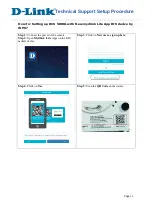
3 Installation
3.1 Connection and configuration: Alarm management
3.1.1 Precautions
Before starting work, make sure that the safety instructions have been read and understood.
DANGER: Electrical Hazard
Before starting work on the unit, make sure that the unit and the control panel are isolated
from the power supply and cannot be energized. This applies to the control circuit as well.
DANGER: Electrical Hazard
All electrical equipment must be grounded (earthed). Test the ground (earth) lead to verify
that it is connected correctly and that the path to ground is continuous.
WARNING: Electrical Hazard
Risk of electrical shock or burn. A certified electrician must supervise all electrical work.
Comply with all local codes and regulations.
WARNING: Electrical Hazard
There is a risk of electrical shock or explosion if the electrical connections are not correctly
carried out, or if there is fault or damage on the product. Visually inspect equipment for
damaged cables, cracked casings or other signs of damage. Make sure that electrical
connections have been correctly made.
CAUTION: Electrical Hazard
Prevent cables from becoming sharply bent or damaged.
3.1.2 Requirements
These requirements apply for the electrical installation:
• The mains voltage and frequency must agree with the specifications for the product.
• Circuit breakers must be installed between the main voltage line and this unit.
• All fuses and circuit breakers must have the proper rating, and comply with local
regulations.
• The cables must be in accordance with the local rules and regulations.
• If the power cable is jerked loose, then the ground (earth) conductor must be the last
conductor to come loose from its terminal. Make sure that the ground (earth) conductor is
longer than the phase conductors at both ends of the cable.
3.1.3 Cables
These requirements apply for cable installation:
3 Installation
6
CCD 401 Installation, Operation, and Maintenance Manual






































